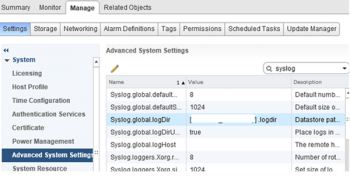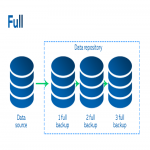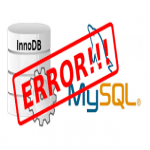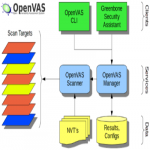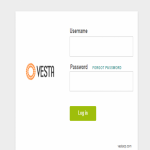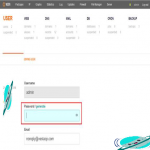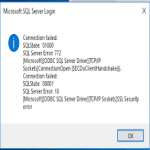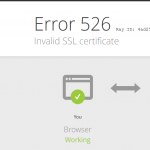Troubleshooting issues with Kubernetes can be complex, and it can be difficult to account for all the possible error conditions you may see.
Here at Ibmi Media, as part of our Server management Services, we regularly help our Customers to perform related Kubernetes queries.
In this context, we shall look into methods to fix kubernetes errors.
How to troubleshoot Kubernetes error with linode ?
To troubleshoot issues with your cluster, directly view the logs that are generated by Kubernete components.
1. kubectl get
i. Use the get command to list different kinds of resources in your cluster (nodes, pods, services, etc). The output will show the status for each resource returned.
For example, this output shows that a Pod is in the CrashLoopBackOff status, which means we need to investigate it further:
kubectl get pods
NAME READY STATUS RESTARTS AGE
ghost-0 0/1 CrashLoopBackOff 34 2h
mariadb-0 1/1 Running 0 2h
ii. Use the –namespace flag to show resources in a certain namespace:
# Show pods in the `kube-system` namespace
kubectl get pods –namespace kube-system
iii. Use the -o flag to return the resources as YAML or JSON. The Kubernetes API’s complete description for the returned resources will be shown:
# Get pods as YAML API objects
kubectl get pods -o yaml
iv. Sort the returned resources with the –sort-by flag:
# Sort by name
kubectl get pods –sort-by=.metadata.name
v. Use the –selector or -l flag to get resources that match a label. This is useful for finding all Pods for a given service:
# Get pods which match the app=ghost selector
kubectl get pods -l app=ghost
vi. Use the –field-selector flag to return resources which match different resource fields:
# Get all pods that are Pending
kubectl get pods –field-selector status.phase=Pending
# Get all pods that are not in the kube-system namespace
kubectl get pods –field-selector metadata.namespace!=kube-system
2. kubectl describe
i. Use the describe command to return a detailed report of the state of one or more resources in your cluster. Pass a resource type to the describe command to get a report for each of those resources:
kubectl describe nodes
ii. Pass the name of a resource to get a report for just that object:
kubectl describe pods ghost-0
iii. You can also use the –selector (-l) flag to filter the returned resources, as with the get command.
3. kubectl logs
i. Use the logs command to print logs collected by a Pod:
kubectl logs mariadb-0
ii. Use the –selector (-l) flag to print logs from all Pods that match a selector:
kubectl logs -l app=ghost
iii. If a Pod’s container was killed and restarted, you can view the previous container’s logs with the –previous or -p flag:
kubectl logs -p ghost-0
4. kubectl exec
i. You can run arbitrary commands on a Pod’s container by passing them to kubectl’s exec command:
kubectl exec mariadb-0 — ps aux
The full syntax for the command is:
kubectl exec ${POD_NAME} -c ${CONTAINER_NAME} — ${CMD} ${ARG1} ${ARG2} … ${ARGN}The -c flag is optional, and is only needed when the specified Pod is running more than one container.
ii. It is possible to run an interactive shell on an existing pod/container. Pass the -it flags to exec and run the shell:
kubectl exec -it mariadb-0 — /bin/bash
Enter exit to later leave this shell.
How to view Master and Worker Logs ?
- If the Kubernetes API server isn’t working normally, then you may not be able to use kubectl to troubleshoot.
- When this happens, or if you are experiencing other more fundamental issues with your cluster, you can instead log directly into your nodes and view the logs present on your filesystem.
Non-systemd systems
If your nodes do not run systemd, the location of logs on your master nodes should be:
/var/log/kube-apiserver.log – API server
/var/log/kube-scheduler.log – Scheduler
/var/log/kube-controller-manager.log – Replication controller manager
Systemd systems
If your nodes run systemd, you can access the logs that kubelet generates with journalctl:
journalctl –unit kubelet
Examples to Troubleshoot Kubernetes error with linode
1. Viewing the Wrong Cluster
If your kubectl commands are not returning the resources and information you expect, then your client may be assigned to the wrong cluster context.
i. To view all of the cluster contexts on your system, run:
kubectl config get-contexts
ii. To switch to another context, run:
kubectl config use-context ${CLUSTER_NAME}2. Can't Provision Cluster Nodes
If you are not able to create new nodes in your cluster, you may see an error message similar to:
Error creating a Linode Instance: [400] Account Limit reached. Please open a support ticket.
This is a reference to the total number of Linode resources that can exist on your account:
- To create new Linode instances for your cluster, you will need to either remove other instances on your account, or request a limit increase.
- To request a limit increase, contact Linode Support.
3. Insufficient CPU or Memory
If one of your Pods requests more memory or CPU than is available on your worker nodes, then one of these scenarios may happen:
i. The Pod will remain in the Pending state, because the scheduler cannot find a node to run it on. This will be visible when running kubectl get pods.
ii. The Pod may continually crash. For example, the Ghost Pod specified by Ghost's Helm chart will show the following error in its logs when not enough memory is available:
kubectl logs ghost –tail=5
SystemError
Message: You are recommended to have at least 150 MB of memory available for smooth operation. It looks like you have ~58 MB available.
iii. If your cluster has insufficient resources for a new Pod, you will need to do one or more of the following:
- Reduce the number of other pods/deployments/applications running on your cluster.
- Add a new worker node or nodes to your cluster.
- Add a new Node Pool with access to more resources and migrate the workload to the new pool.
[Need help to Troubleshoot Kubernetes errors? We can help you. ]
Conclusion
This article covers how to troubleshoot Kubernetes error with linode.
- To troubleshoot issues with the applications running on your cluster, you can rely on the kubectl command to gather debugging information. kubectl includes a set of subcommands that can be used to research issues with your cluster.
- To troubleshoot issues with your cluster, you may need to directly view the logs that are generated by Kubernetes' components.
This article covers how to troubleshoot Kubernetes error with linode.
- To troubleshoot issues with the applications running on your cluster, you can rely on the kubectl command to gather debugging information. kubectl includes a set of subcommands that can be used to research issues with your cluster.
- To troubleshoot issues with your cluster, you may need to directly view the logs that are generated by Kubernetes' components.
